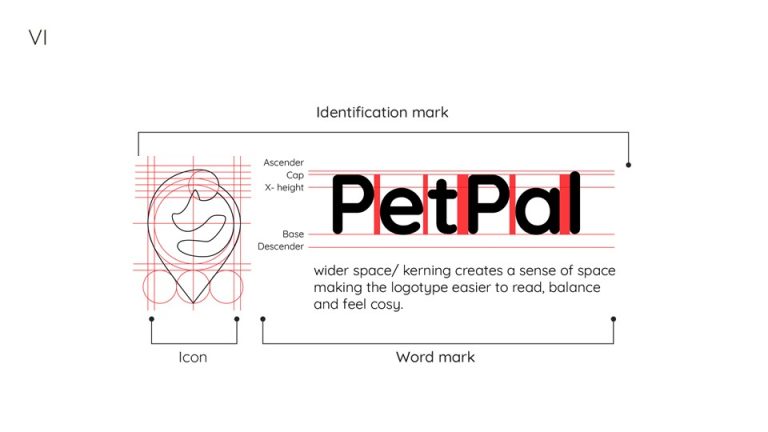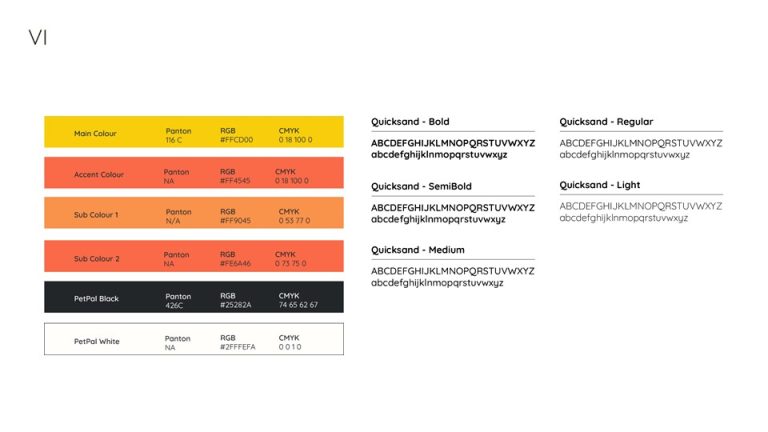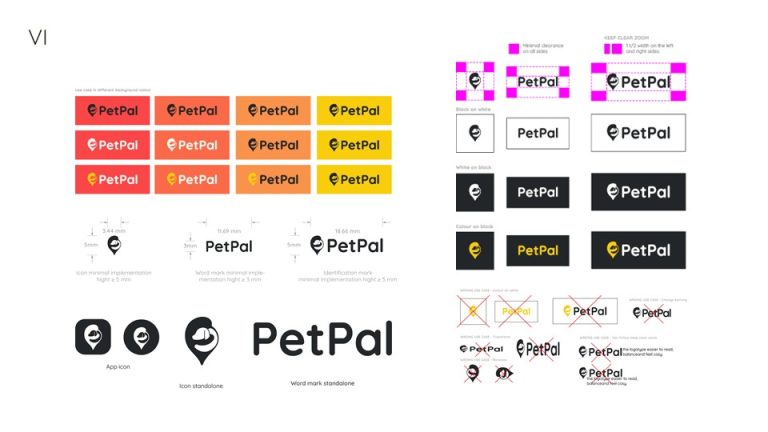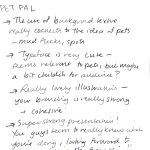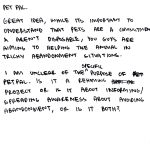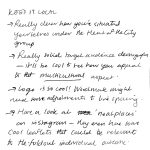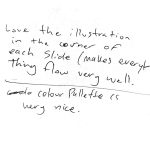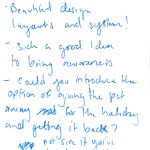GRAD701 – Week 06
Recap of the week
- For the last week, we have primarily focused on presentations. Thus, I paused the background research for the publication and layout design/testing.
- Because one of my roles in the group was providing a VI system for the group to use in order to output works with the same identity. Thus I spend most of my time refining our VI system and application rules. Things included The usage of typeface, colours, icons, and where, when, and how to use them.
- We had assigned different parts of the presentation for each team member to fill. I think it is a logical approach because each of us has a different understanding of the project.
- After filling up all the contents, we ran two group runtimes to test our presentation’s timing and familiarity. After the meeting and runtime testing, I realised my part is most time-consuming and hard to manage. Therefore, I ran a couple more test runs by myself to see how much time I took to finish my part. However, after three runs, I still find myself running out of set-time which might affect follow team members. Thus, I trim down some areas in the presentation in order to fit my timing.
Feedbacks
Our group got a lot of feedback from the presentation, both from the classmate and the lecturer. Our work is certainly not perfect, and there is a lot of clean up and reconsideration needed to make for it to be good. Thus feedback is actually quite helpful in terms of helping us think outside of our fixed minds.
Most of the feedback was positive, and it is surely nice to hear good talk about your work. However, I am more interested in the issues that we have. From all the feedback as of now, the primarily issue is the VI system, and out of all the problems, font and typeface is the key problem. Since I was in charge of VI designing, I have to take note of that because our typography is chosen collaboratively. Therefore, I will be calling a meeting with the group members to discuss such an issue.
The key takeaway
- Typeface are a bit childish
- Was not serious enough
- Doesn’t look feel like a trustworthy brand
- Logotype need adjustment
- Colur need to be trim down
There are things that I can think of to resolve the font issue.
- First, denied there was an issue, try to circle around and make a stronger statement of why we chose such font and how we can make it work.
- Second, we can separate body type and logotype. Use two typefaces for different purposes.
The font we are using currently is good to create a sense of welcomeness, and surely a less serious feeling can make people feel more invited. On the other hand, it does project a sense of childishness and feels a bit too playful. Besides, we haven’t tried to apply the font to other elements, such as using it as the primary typeface of the app. But from what I felt with the presentation, I realised our font might not be applicable for body text.
Nevertheless, we need to still consider our brand’s keywords, one of which is being playful and less serious. So, it is crucial to find a typeface that is perfectly legible, trustworthy and able to resemble a playful brand.
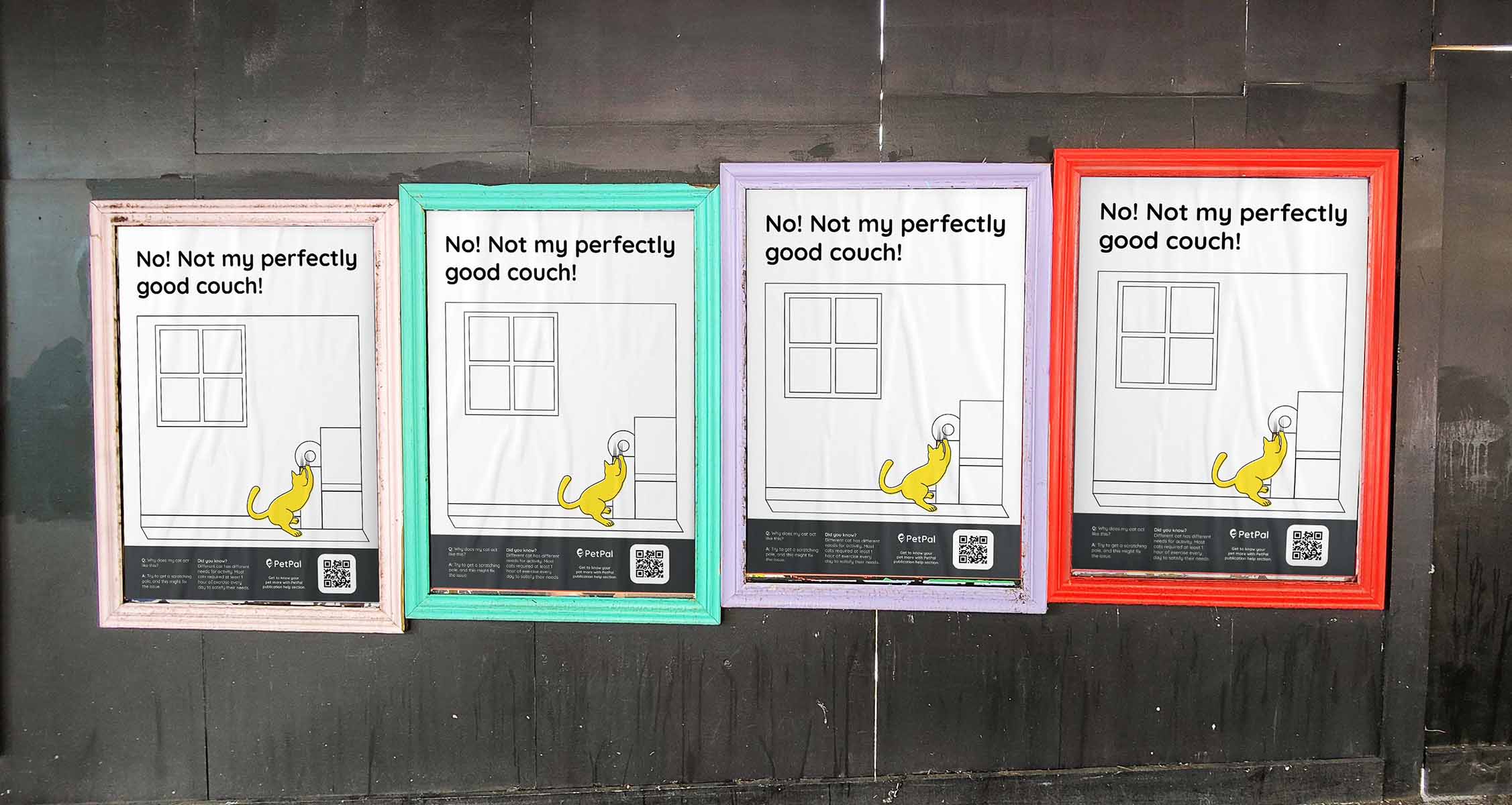
Things to work on
- Have a meeting and disguss aobut our typeface / colour
- Start thinking about the publication, layout design, content gathering, and icon/illustration design
- Refine the poster design. Take the feedback from the class and evaluate the possibility of improvements.

Survey analysis
As of now, We have collected 74 responses. Out of the 74 responses, 71 were valid.
What considers a valid survey?
- The responder’s IP must be within NZ preferably in the Auckland region.
- One IP address can only answer up to 3 times. [In case more than one household member is answering with the same address from the ISP].
- All responders must be over the age of 18.
- linear answer with contradictory responses.
- Remove the lowest and highest rating responses from the survey.
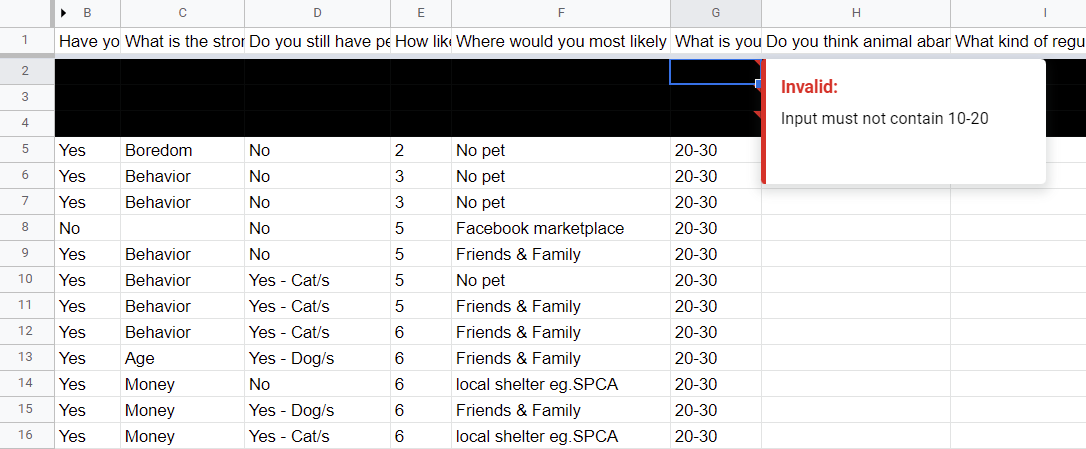
Because my survey is collected anonymously, therefore, it is not guaranteed to be 100 % reflective of a real word situation.
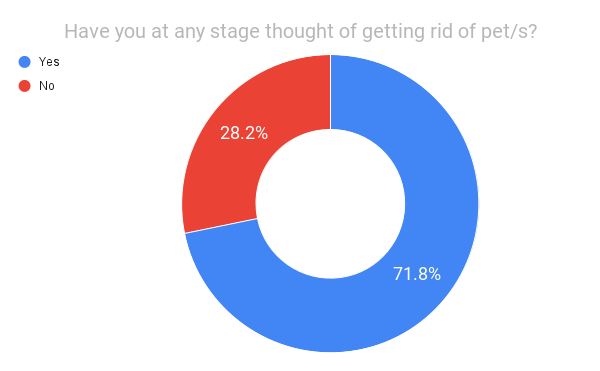
From my survey, I realised the majority of people at some point have the idea of abandoning their pets. And out of all the people who wanted to get rid of their pets, almost half of them are due to their pet’s behaviours.
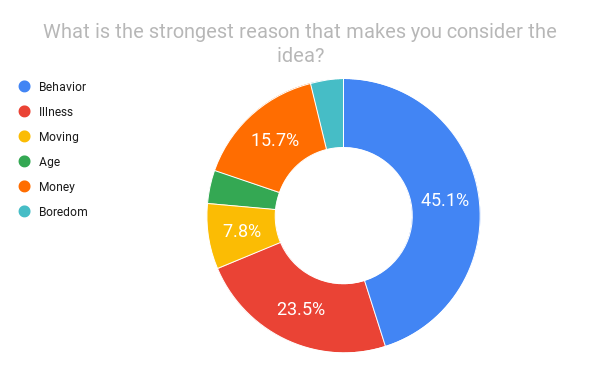
Therefore It is essential to mention or help the pet owner to better understand their pet and why they did certain things.
The same result from the survey can be applied to my posters design, I realised the best way to capture people’s attention is by making relatable designs. By showcasing certain “bad” behaviours from the animals to make the viewer feel related, and if they have suffered or suffering from the same experience, what is their optimal solution. My poster aims to raise the question. And offer them a snippet of the solution, then lead them to scan the QR code to read our publication and find out more, and understand more.
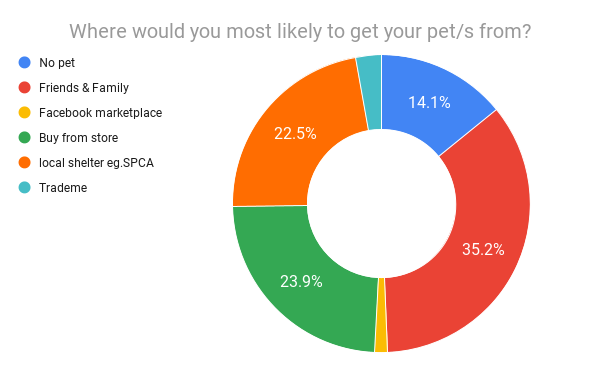
And I will be addressing the top two reasons why people think of abandoning their pets in our publication. First, common pet behaviours issues and solutions. Second, the common illness of pets, how to spot and treat the issue, when is the time to see a specialist, and the average treatment cost.
An interesting finding from my survey, the number of pet owners, is basically the same as the report “Companion animals in New Zealand 2016”. However,I see a decrease in dog ownership and a decrease in people who are not considering having a pet from my survey suggested people are still willing to own pets even during COVID. There is no strong evidence of why this is happening. Maybe it is limited by my sample size.
But there is evidence suggesting that the need for a companion is bound to our primitive motives. And owning a pet to alleviate some psychological pressures is logical (Beetz, 2012). It has been scientifically proven that pets can help relieve anxiety(Cole, 2007) by stimulating the release of oxytocin.
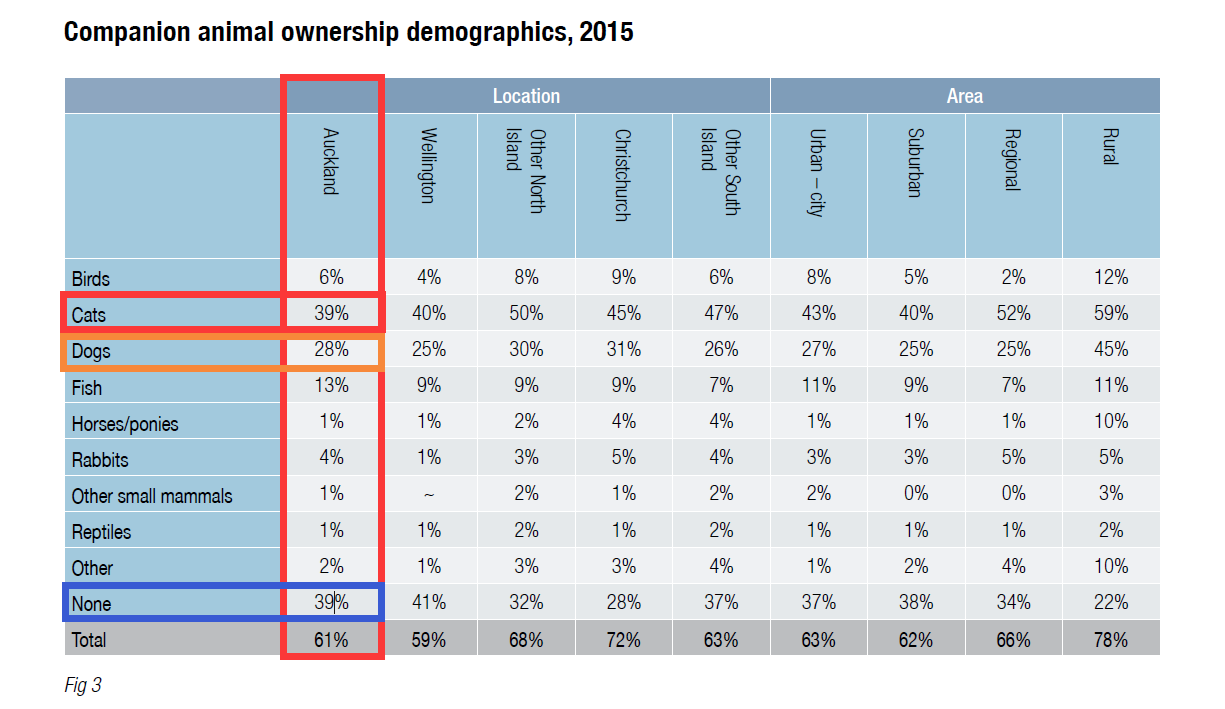

From the survey, I find out that the more bad experiences they have while owning a pet, the less likely they will ever consider having a pet in the future. Thus, it is crucial to educate people before they have a pet, knowing the pet’s personality, food, and activity requirements. When they realise owning a pet is a great responsibility, and they are well prepared. That is when we can mostly guarantee they will have a nicer pet-owning experience.
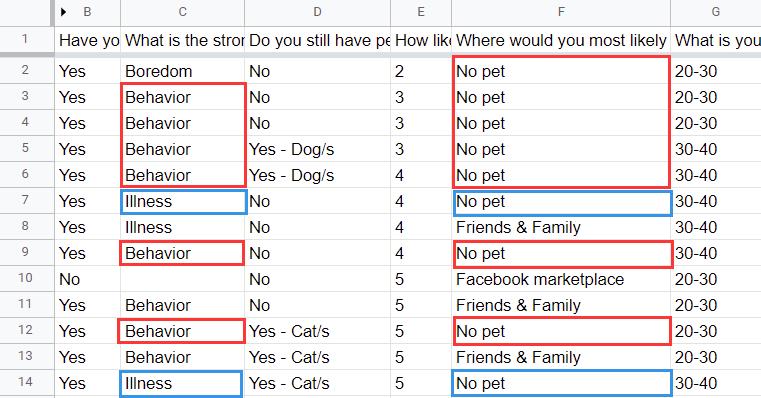
Individual Board
Zhanlong Deng Individual_boards_6AB
Group Board
Cherry Group PetPal.pdf
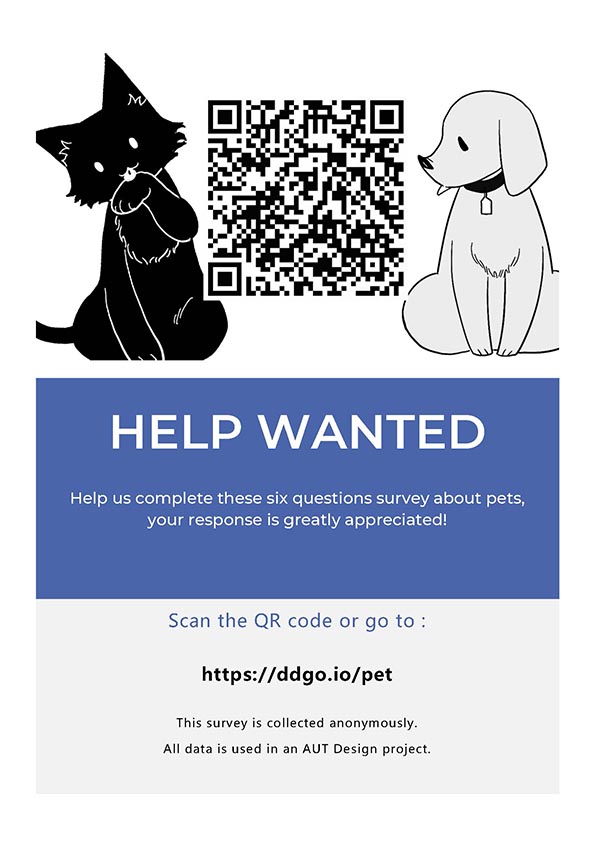
References
Miller, S. C., Kennedy, C. C., DeVoe, D. C., Hickey, M., Nelson, T., & Kogan, L. (2009, 2009/03/01). An Examination of Changes in Oxytocin Levels in Men and Women Before and After Interaction With a Bonded Dog. Anthrozoös, 22(1), 31-42. https://doi.org/10.2752/175303708X390455
Friedmann, E., Katcher, A. H., Lynch, J. J., & Thomas, S. A. (1980). Animal companions and one-year survival of patients after discharge from a coronary care unit. Public health reports (Washington, D.C. : 1974), 95(4), 307–312.
Beetz, A., Uvnäs-Moberg, K., Julius, H., & Kotrschal, K. (2012). Psychosocial and psychophysiological effects of human-animal interactions: the possible role of oxytocin. Frontiers in psychology, 3, 234.
Cole, K. M., Gawlinski, A., Steers, N., & Kotlerman, J. (2007). Animal-assisted therapy in patients hospitalized with heart failure. American journal of critical care : an official publication, American Association of Critical-Care Nurses, 16(6), 575–588.
WILSON, CINDY. (1991). The Pet as an Anxiolytic Intervention. Journal of Nervous & Mental Disease, 179(8), 482-489. Retrieved from http://ovidsp.ovid.com/ovidweb.cgi?T=JS&PAGE=reference&D=ovfta&NEWS=N&AN=00005053-199108000-00006.
奥克兰理工大学作品
本作品是隶属于我在AUT学习期间制作,使用及传播需要遵循许可协议。详细可查帮助中心。 This post/project is an AUT university assignment, the use of any kind must obey the terms.
版权保护
可能含有版权保护内容
不可下载
未经授权,不可下载
不可商用
可能含有版权保护内容
